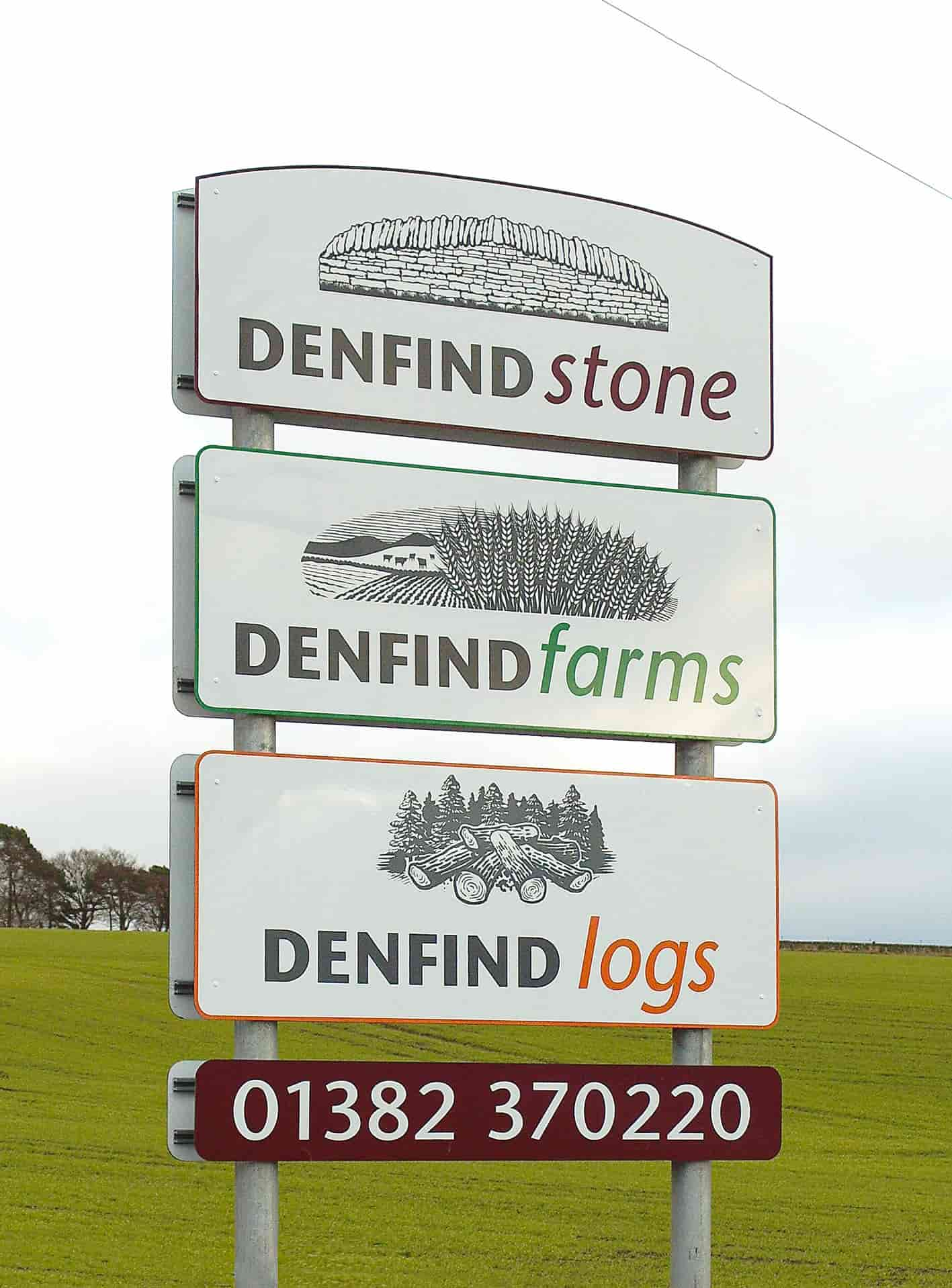
Freestanding signs in and around industrial estates, retail districts, and tourist attractions provide a reassuring welcome for visitors.
Freestanding signs are ideal for wayfinding and high impact notices. Direct visitors in and around your premises and display important information. Consider using reflective vinyl for roadside signs. With options of single and double sided signs, as well as illumination, they can be noticed at any time of day or night.
Combined with garden landscaping, freestanding signs can grow into a local landmark. Interchangeable sign panels can also be included for temporary messages throughout the year.
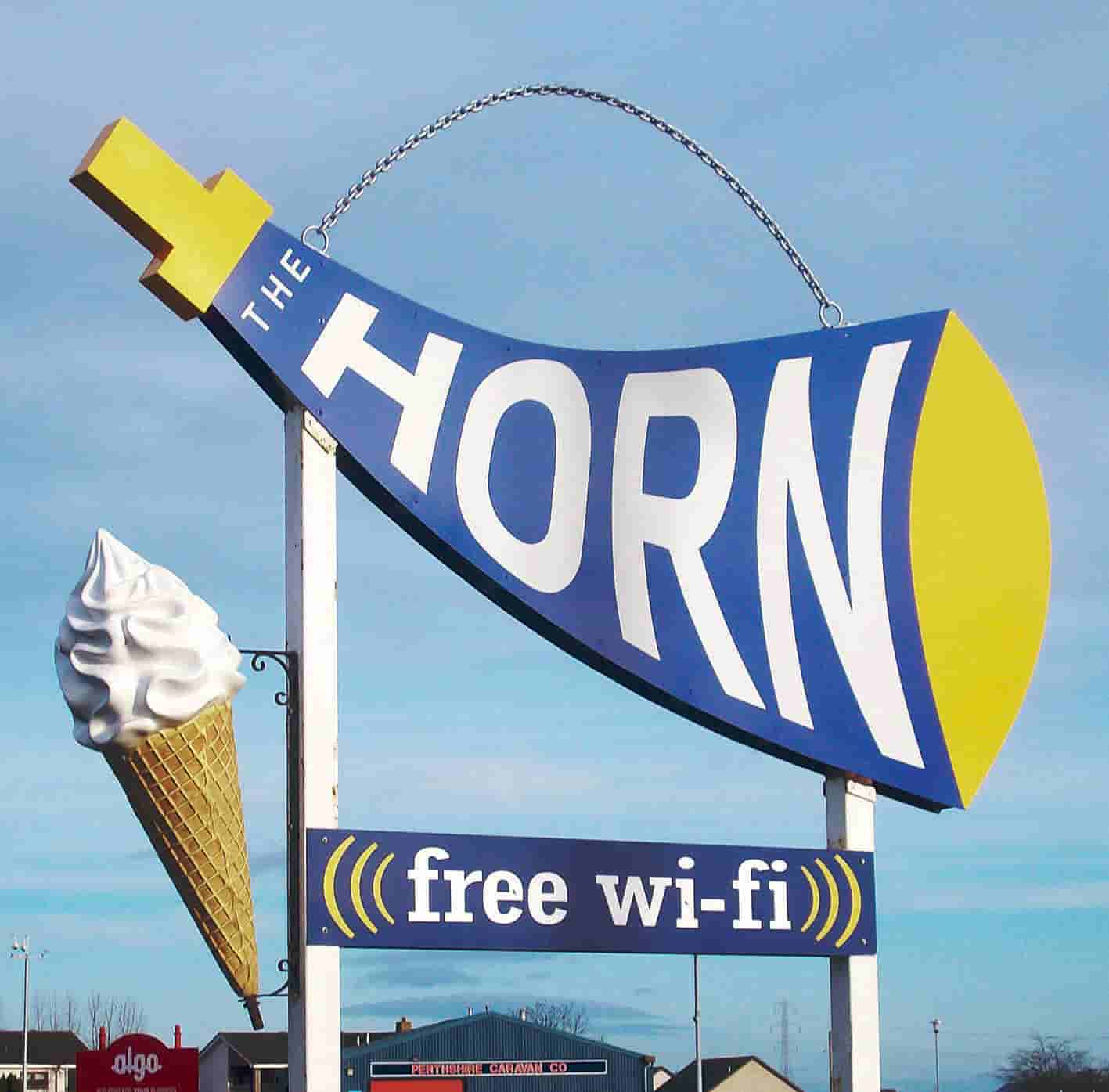
Consistency is key. Visitors and potential customers will recognise your business’ visual identity throughout your signage.
Your sign’s environment is important too. Signs which are solely for pedestrians can include more information than signs for motorists. In busy locations, concise messages are crucial for the success of your message.
Irregular shapes and high contrast colours grab attention. Depth and dimension add visual interest too.
Combining the posts into the overall design of your sign completes the look. To disguise fixings, posts can be fabricated as part of the sign structure or hold decorative elements such as finials and wrought iron ornaments.
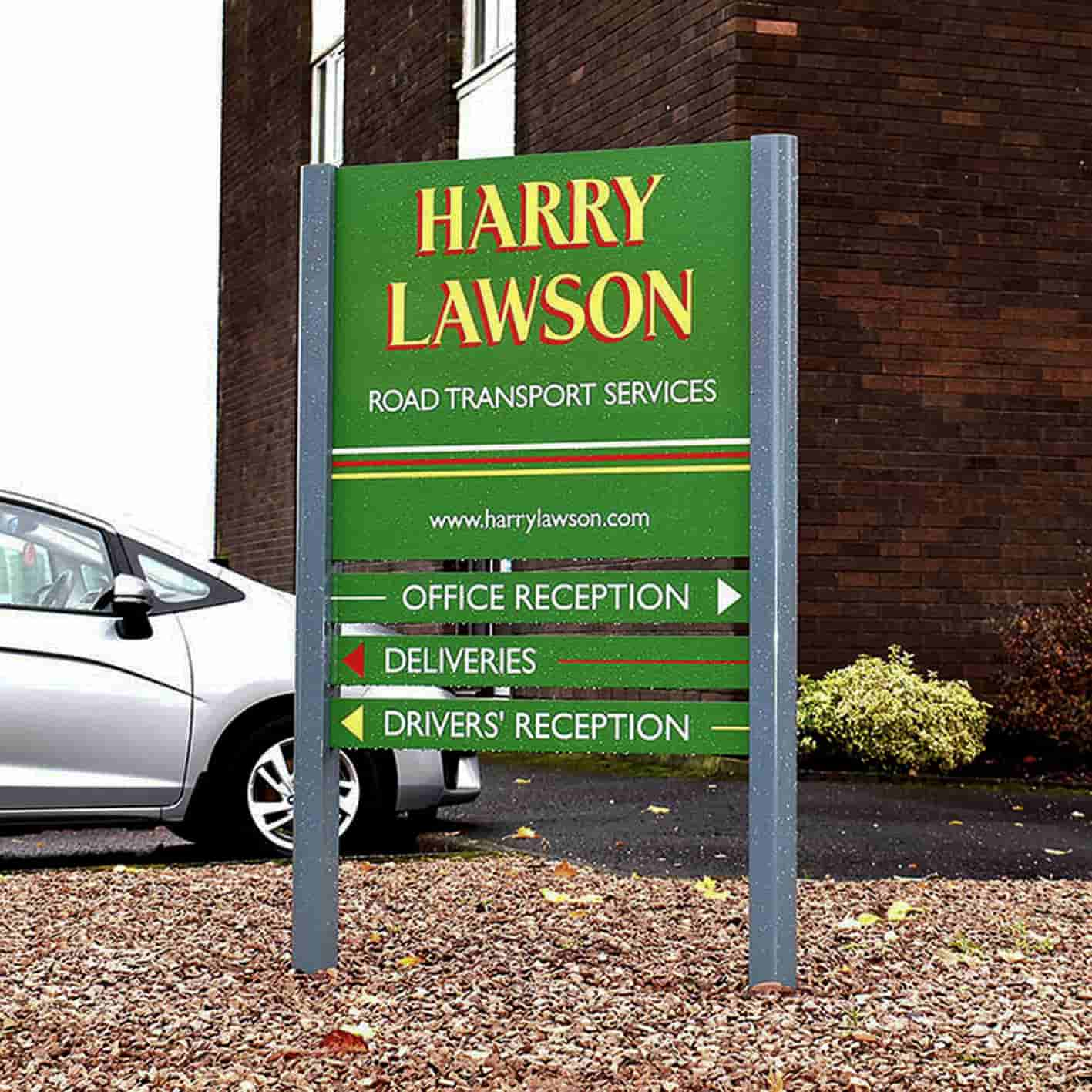
Durable signposts and poles are made from timber, aluminium, and steel. Lengths and thicknesses are determined by the size and weight of the sign(s), environment, as well as the wind load.
Pressure treated timber posts have a chemical preservative coating. The treatment process prolongs the life of the timber and makes the post less likely to rot than untreated timber. Pressure treated posts are available undressed (rough sawn) and dressed (smooth finish).
Pressure treated timber posts can be used bare. However, coating with wood preservatives or paint is recommended to lengthen the durability of exterior posts.
Aluminium posts will not corrode and are lighter than steel. They can be round, square, and profiled. Standard mill finish aluminium, road sign grey and powder coated RAL colours are available in gloss, satin, and matt finishes.
Timber and aluminium posts and poles can also include recessed grooves to attach panels.
Steel posts are stronger than aluminium and suited for heavier sign structures. Galvanised steel is used for exterior signs, as well as grey powder coated as standard. Bespoke powder coated and painted colours are also available.

For strength and durability, coated plywood with hardwood edges, aluminium composite, traffic grade aluminium, and mild steel are preferred for post mounted sign panels.
Sign trays also provide advantages for their strength and hidden fixings. In addition, sign trays transform thin, flat panels with options for dimensional and illuminated components.
Signs can also be hung from T-shaped horizontal posts, as well as the underside of larger signs above.
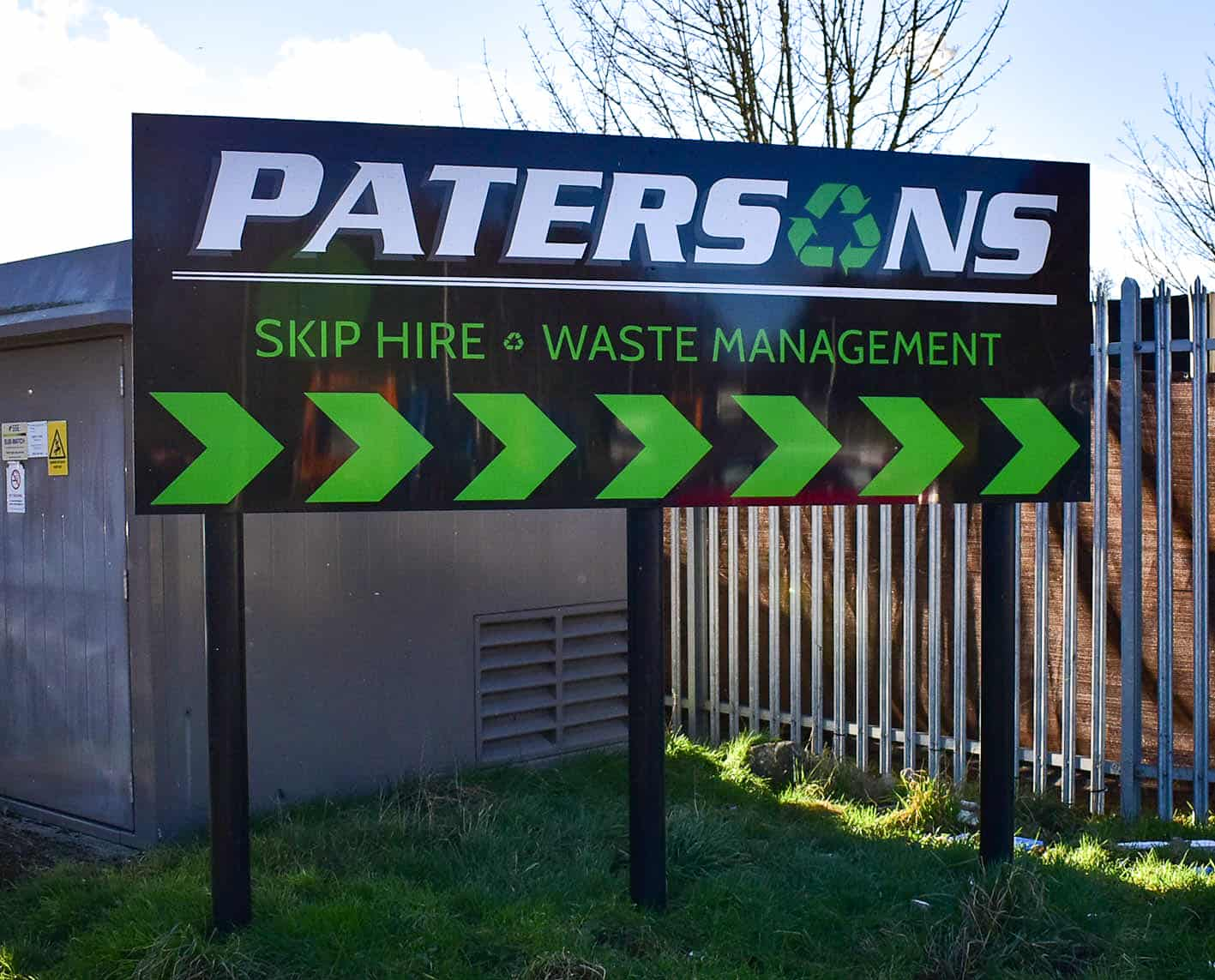
The sign’s mass and wind load are both factors to consider when choosing the size of the sign. Size and weight determine the length and thickness of the post. The depth of the posts is determined by the height of the sign. In turn, the sign’s safe installation is also influenced by the ground surface. Hard surfaces may require the use of plant machinery.
Base plates are commonly used for planting steel and aluminium posts. Plates prevent the posts from rotating. Post sleeves are recommended for timber posts, lessening the risk of moisture penetrating the wood underground.
Signs can be fixed directly through their face and into posts. However, neater methods such as flat steel bar angles ensure no visible fixings on the face of the sign.
Flat panels of aluminium and aluminium composite are attached to poles with the aid of horizontal channels and pole clamps. The channels adhere onto the back of flat panels with very high bond, double-sided tape. Clamps wrap around the posts and tightly attach to the channels.
Other methods for disguising fixings include split battens (mainly for plywood signs), extruded grooves in posts, and threaded rods inserted into poles.
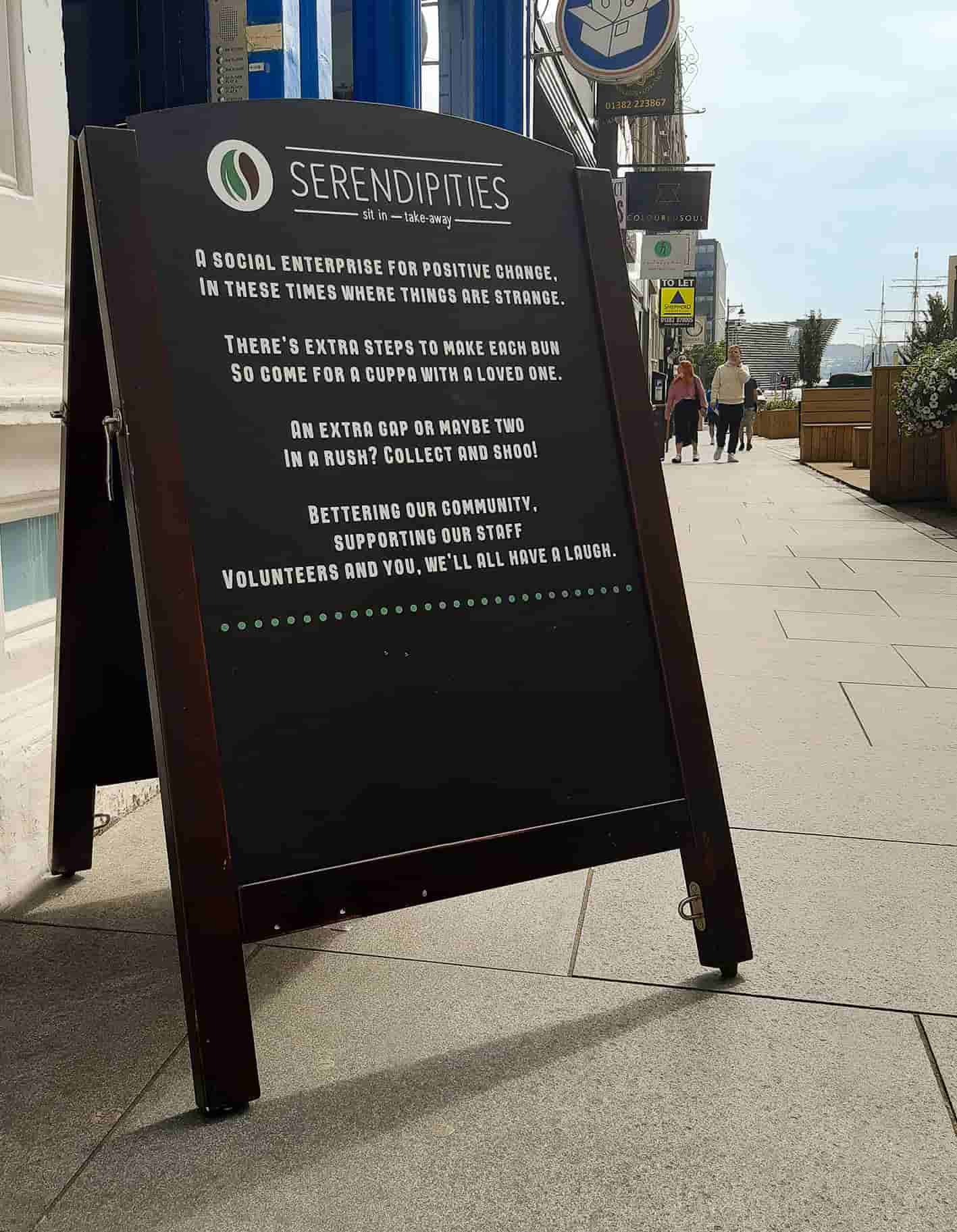
Portable pavement signs are most often single panels sunk into a weighted base. Or hinged A-frames. Each is double sided and manufactured in various styles, sizes, and finishes. Bespoke signs are also made to your specification. However, mass manufactured pavement signs are most often cost effective for portable freestanding signs.
Pavement signs can include areas for chalkboards and frames for your posters. Single panel signs can swing or remain rigid. Rotating and digital signs are also available for higher-end specifications.
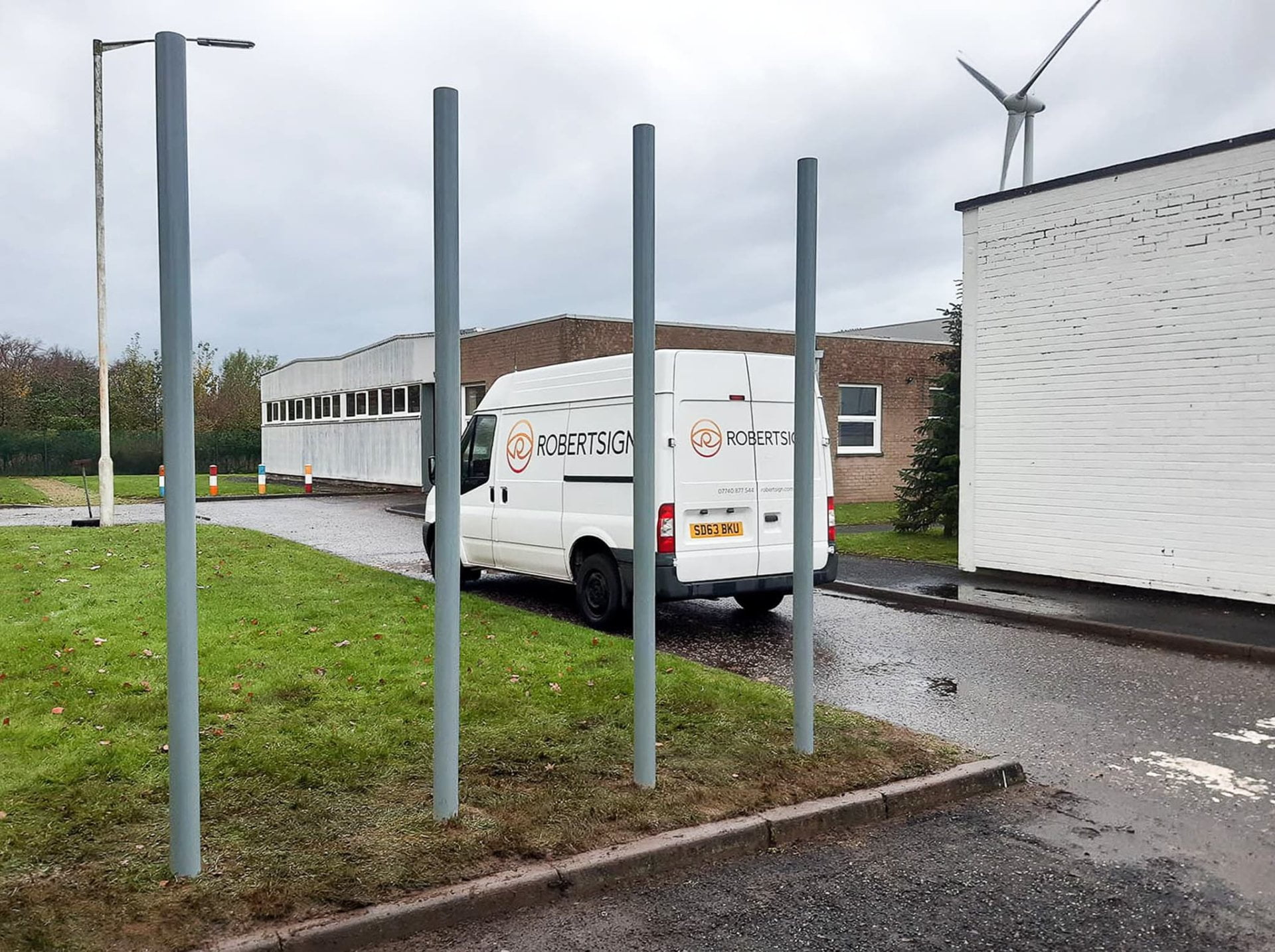
Always check with your landlord or local authority before ordering freestanding signs. Especially on roadside locations.
Pavement advertising may be deemed as obstructions and should be considered before ordering.
Freestanding signage artwork, dimensions, and specifications are available on request.
Make your signs work for you. Visit here to learn more.
Need advice and a quote for your freestanding signs in Dundee? Get in touch to find out more.